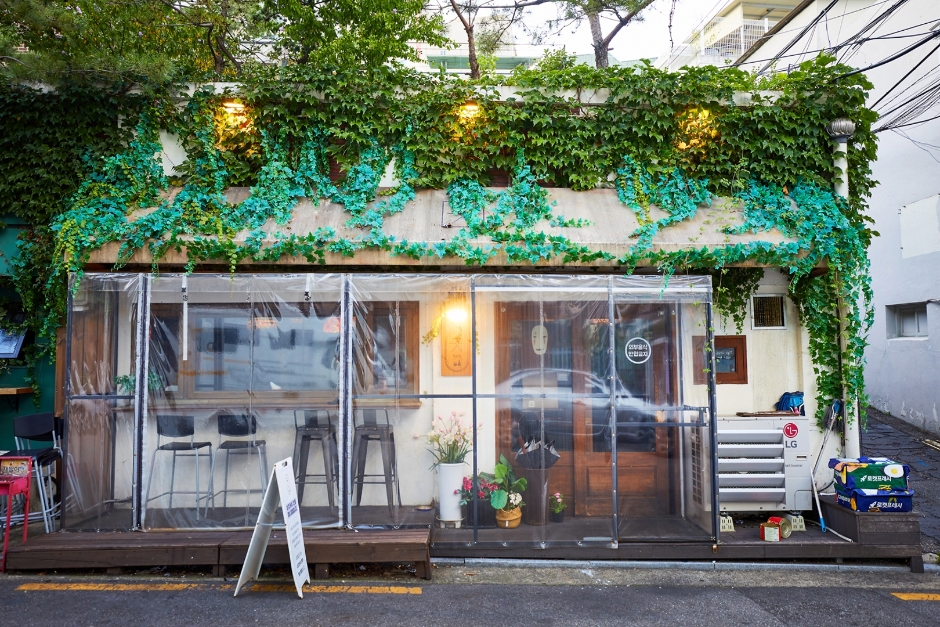New York New York (Kensington Hotel) (뉴욕뉴욕(켄싱턴호텔))
3.4Km 2024-02-28
16 Gukhoe-daero 76-gil, Yeongdeungpo-gu, Seoul
New York New York is a steakhouse located near Yeouido Hangang Park. Situated on the first floor of the Kensington Hotel, it offers authentic New York-style steaks. The signature course is called 'Love in New York,' featuring dishes such as ceviche with marinated king prawn, scallop bouillabaisse, grilled angus beef tenderloin, and steamed abalone. When ordering for two or more, a complimentary bottle of red wine and cake are provided. Nearby attractions include the The National Assembly of the Republic of Korea and Yeouido Saetgang Ecological Park.
YallaKOREA (얄라코리아)
3.4Km 2025-10-23
#700, The Salvation Army Building, 69 Saemunan-ro, Jongno-gu, Seoul
YallaKOREA is a medical tourism agency specialized in serving Arab patients, providing medical services since 2016 for those wishing to visit plastic surgery and dermatology clinics in Korea. For patients undergoing surgery, it offers customized services including medical interpretation, private transportation, hotel reservations, airport pick-up and drop-off services, and daily tours. With years of experience and a deep understanding of Arab culture, it ensures safe and convenient medical tourism.
Anjjang (안짱)
3.4Km 2024-03-15
32 Tongil-ro 39-gil, Seodaemun-gu, Seoul
This Japanese-style bar and restaurant is run by a chef who studied abroad in Japan and serves delicious snacks that go well with alcoholic drinks. Spicy stir-fried soba, Japanese-style fried noodles with beef loin and vegetables, and grilled chicken, skewered chicken thighs grilled over a charcoal fire, are amazing. Be sure to check out today's menu, which changes every day. Some people try to order ramen because the restaurant was featured as a ramen restaurant in a K-drama, but ramen is not actually available. Besides highballs and sake, diners can also order a sour, which allows you to enjoy the freshness of lemon, citrus, and passion fruit. There is a cozy atmosphere created by unique props like cute dolls and mirror balls, making it a great place for a conversation.
Olive Young - Bukgajwa-dong Branch [Tax Refund Shop] (올리브영 북가좌동)
3.4Km 2024-04-22
191, Geobukgol-ro, Seodaemun-gu, Seoul
-
Hyeopjin Computer [Tax Refund Shop] (협진컴퓨터)
3.4Km 2024-04-23
3F, 74, Cheongpa-ro, Yongsan-gu, Seoul
-
Audio Park - Yongsan ETLand Branch [Tax Refund Shop] (오디오파크 용산전자랜드)
3.4Km 2024-04-22
74, Cheongpa-ro, Yongsan-gu, Seoul
-


![Olive Young - Bukgajwa-dong Branch [Tax Refund Shop] (올리브영 북가좌동)](http://tong.visitkorea.or.kr/cms/resource/85/2889585_image2_1.jpg)
![HB Coms [Tax Refund Shop] (에이치비컴즈)](http://tong.visitkorea.or.kr/cms/resource/94/2891194_image2_1.jpg)
![Sjkcnc [Tax Refund Shop] (에스제이케이씨엔씨)](http://tong.visitkorea.or.kr/cms/resource/96/2891196_image2_1.jpg)
![Hyeopjin Computer [Tax Refund Shop] (협진컴퓨터)](http://tong.visitkorea.or.kr/cms/resource/04/2891204_image2_1.jpg)
![Old and New [Tax Refund Shop] (올드앤뉴)](http://tong.visitkorea.or.kr/cms/resource/10/2891210_image2_1.jpg)
![Banwol Audio [Tax Refund Shop] (반월음향)](http://tong.visitkorea.or.kr/cms/resource/18/2891218_image2_1.jpg)
![Audio Park - Yongsan ETLand Branch [Tax Refund Shop] (오디오파크 용산전자랜드)](http://tong.visitkorea.or.kr/cms/resource/92/2878492_image2_1.jpg)
 English
English
 한국어
한국어 日本語
日本語 中文(简体)
中文(简体) Deutsch
Deutsch Français
Français Español
Español Русский
Русский